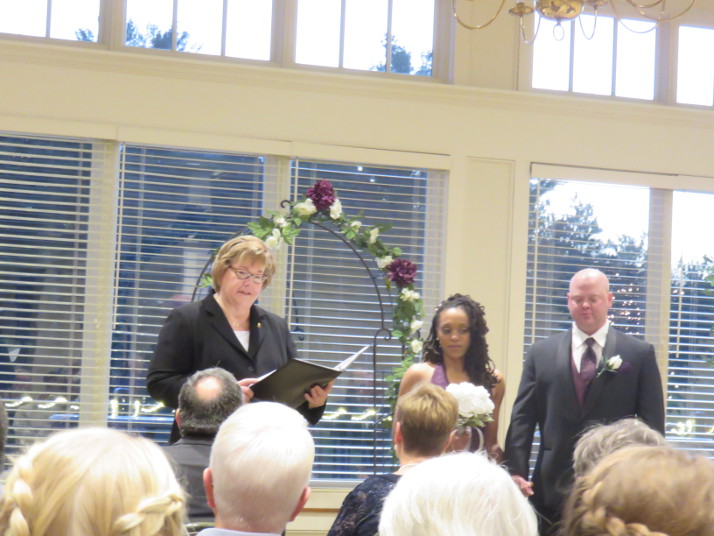Changing Rules for Wedding Parties
Changing rules for wedding parties mean lots of options and choices when selecting who will stand with you on your wedding day. The traditional rules that set wedding parties as four or five women for the bride and a corresponding number of men for the groom seem antiquated and at times inappropriate.
With same sex couples leading the way, there are no longer rules about the gender of your attendants. It’s common to see a mix of men and women standing with each of the brides or grooms, and it makes perfect sense to include the people closest to you in your party, regardless of gender. One sweet wedding I officiated had the bride’s brother standing with her, and the groom’s sister standing with him. Honoring these special sibling relationships without worrying about gender made all the sense in the world.
Wedding parties these days range from zero attendants to nearly 20. Couples seeking to simplify their wedding day opt to forego a wedding party and have parents or siblings or good friends serve as the legal witnesses and sign the marriage paperwork. This seems to be a good approach for the busy, professional couple who aren’t interested in bachelor/bachelorette parties and prefer to spend more time with each other on the wedding day. At the other extreme are the “super wedding parties” with 10 or more attendants on each side. If this is appealing to you, just remember that it is much harder to manage and direct larger groups of people, and everything takes longer – from hair and make-up sessions to photography to the logistics of moving everyone from area to area.
Changing rules for wedding parties also makes space for uneven numbers of attendants. If you have 3 close friends, and your fiance(e) has 2 siblings and 2 close friends, those are the people you should have in your wedding party. The only time it may be more obvious that the numbers are not even is during the processional and recessional at your wedding ceremony, and by mixing things up and having each attendant enter alone or including a trio along with couples, those moments can be gracefully handled, too.
The changing rules for wedding parties has also required some new language. The people who stand with you can simply be referred to as attendants rather than bridesmaids and groomsmen. In place of maid/matron of honor and best man, we now have honor attendants. As you plan your wedding, consider who the important people in your life are, and build your wedding party accordingly. All options for numbers and genders of attendants are open to you so surround yourselves with supportive people who want to make the day special for you.

